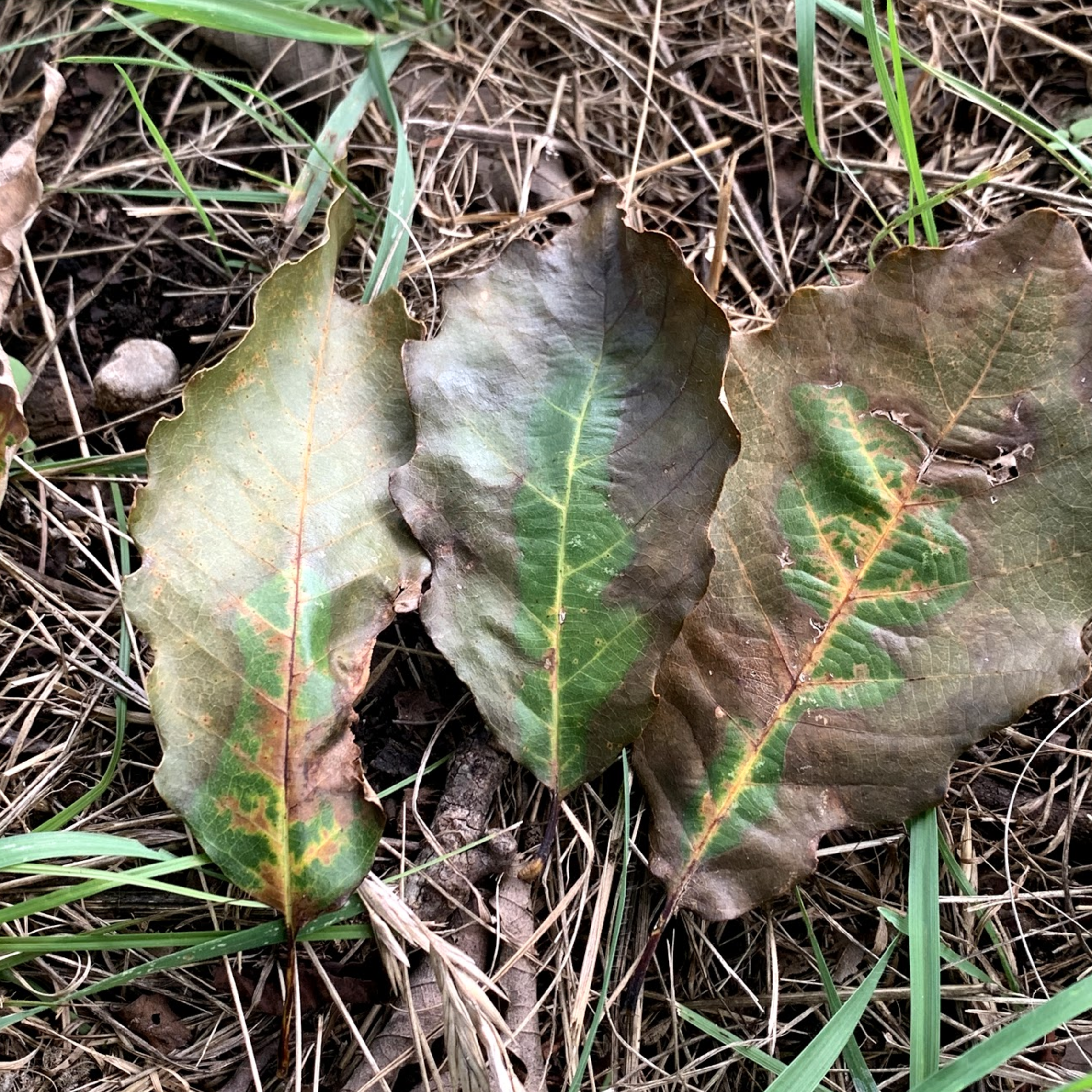Yes, Send them to Research Associates Laboratory (located in Allen, TX) for the best and quickest and easiest and least costly option.
The white oak species that often grow native or are planted in Central Texas ARE NOT resistant to oak wilt. They often graft with the Live oak, red oaks, and each other (see the videos and pictures throughout this site and on youtube channel – link provided at bottom of every webpage). Except for the Post oak, most of these white oak species die at about the same percentage as Live oaks (some of which the same rate of speed) and it is in most cases not safe to re-plant where there is or was or will be an oak wilt mortality center. This expert’s view that just because these species may die more slowly and that they are less prevalent should not be erroneously misconstrued as “resistant.”
The ordinances are primarily a beetle-centric and paint-centric approach at prevention. Let me explain – while code enforcement officers and or concerned city officials or volunteers are diligently doing rounds daily through their city/NA looking for tree workers not painting wounds, they are driving right by spore producers with fungal mats (in most cases unknowingly) and doing nothing. Plant pathology 101 – it is imperative to prioritize the scouting and elimination of the spore-producing oaks prior to mat formation above even painting wounds. This paint-centric approach grossly neglects the frequency of natural occurrences of wounding, which almost always go unnoticed and thus unpainted. To this end, the primary prevention goals must first be to codify regular expert scouting and mandatory elimination of said tree and access to public funds as necessary to accomplish this. On a recent tour through three central Texas municipalities with aggressive paint-centric ordinances, I was able to very easily identify over five infected spore-producing trees within the first 10-15 minutes. Plant pathology 101 is this – make the number one priority to find and remove the source of the inoculum.
No. Actually, the tree will likely die quicker as a result. Cornmeal, molasses, compost teas, greensand, etc. can help a tree resist minor, secondary pathogens and pests but they do NOT empower your oaks to beat the primary pathogen that is oak wilt – the healthier they are, the harder they will fall! Further, there are no little Archaea prokaryotic single cell organisms that guarantee they will fix your oak wilt problem or give you your money back! All these recommendations are snake oil in regards to being effective oak wilt treatment options. Any success claimed is likely due to the tree either not contracting the disease, or being a part of the 15% that don’t die, or even more likely – riding the coattails and plagiarizing the success of fungicide injections.
Early pioneers during the 1990’s in the initial research of Alamo oak wilt fungicide macro-injections, can still attest to trees treated during that time are still very much alive.
In most cases only once. Over 90% of the trees I’ve treated over the past decade have only been treated one time. My success rate to date is approximately 90% – with therapeutic injections representing approximately 30% of those treated.
The trenching protocol of the Texas Forest Service Oak Wilt Suppression Program currently is just that, it is designed to temporarily suppress the disease. Current protocol allows for various trench-compromising practices such as fungicide treatment inside the trench (when on the contrary it should require herbicide application) and roguing has all but been abandoned as a recommendation and even more so in practice. Another compromising practice is that trenches are often laid through a thick mot where obviously a high density of large roots are cut and usually only separated by inches (in cases of rocksaw) of tilled soil, which is extremely conducive to re-grafting occurrences. Quite disturbing is the lack of conditioning by the Texas Forest Service of their 74-76% claimed success rate. They conveniently leave out the qualification that this determination of “success” is currently (as of mid-Nov. 2019) derived from “random” Post Suppression Evaluations (PSE) done every other year for trenches installed 1-5 years from time of the PSE year. The TFS does not now nor have they ever set as a standard for the PSE program, to verify trench efficacy over that 5 yr. mark. A major problem here is that the public will likely infer that the same “success” rate would be the case at say 8 or 10 years as well. That is absolutely not the case! Coincidentally, I frequently observe re-grafting of roots and subsequent trench failure evidences itself 5-8yrs. after trench install. Further, many seasoned commercial arborists believe that the search for new innovative ideas and studies for containment (i.e. silvicide, trench inserts) which are both long-term and affordable are long overdue.
There is no “safe” time. Every year I visit numerous brand new oak wilt centers which undoubtedly started as a result of overland spore vectoring during the “safe” months of July-January. Competent ISA Certified Arborists who have integrity and hire workers who do as well and invest heavily in training workers in appropriate safe pruning & wound sealing practices as well as have exceptional equipment to do so, are by far the most critical factors to preventing oak wilt by pruning. A promptly-painted wound in spring is as safe as a painted wound in August or January. Further, pruning inherently wounds a tree. The tree’s best response for compartmentalization by initial callus formation and then later by wound wood formation occurs during the spring according to the definitive study and protocol called the Hamburg Pruning System. There are many other benefits of tree pruning and for each of them the spring time also provides the best results for them as well.
Oak wilt is NOT transmitted by chainsaws or pole saws. Intentional attempts to do so during experimentation have failed. Further, the fungus cannot survive heat beyond 96 degrees Fahrenheit (or more technically - vascular wood temperature above 86 F), which both these tools exceed quickly when used. In this sense – they are actually self-sterilizing if you will. Any directive to prevent oak wilt by sanitization of these tools is unfounded and irrational. The concern here is prompt application of paint on all pruning cuts. The tools are not the cause of the new oak wilt centers – it is a result of those doing the pruning not painting promptly or at all.




